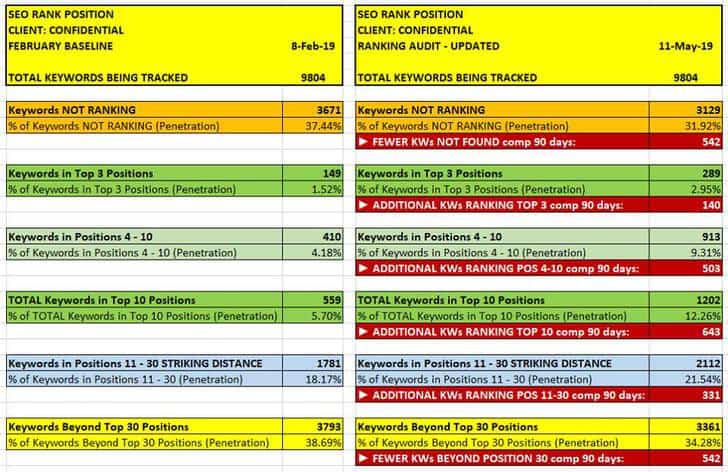Advanced Keyword Research Technique

I do keywords differently, I think.
As everyone knows, keywords are somewhat important. But there are many different approaches. Mine, I think, is a little different, and thought I would share it. There might be steps in here I could automate more, but this is the way it’s comfortable for me…
First, I do all the usual discovery stuff… but then…
1. I manually review the current site and it’s top 3 competitors – a serious end-to-end manual review – and I create a spreadsheet of all the core and longer tail keywords that I find.
2. Then I expand the spreadsheet to include all the appropriate permutations (so if I found “Los Angeles bankruptcy attorney” I would add “bankruptcy attorney Los Angeles”).
3. Then I expand it further to add LSIs (so I would then add “Los Angeles bankruptcy lawyer”).
4. Then I expand it even further to add modifiers with intent (“leading…”, “top ranked…”, etc.), and modifiers for positioning.
At this point my keyword list could easily be 5,000 to 15,000 keywords and phrases or more.
5. Then I run them all through SerpBook and export a csv file.
6. I sort the csv file both by current organic rank and by search volume.
7. I select all keywords that are above a minimum search volume, and/or have a current ranking over position 50
This becomes my working “priority keyword” list for optimizations (my optimizations are beyond just on-page technicals to include content, internal cross-linking, and a few other tactics).
8. I put first priority to keywords that are ranking positions 11 through 30 and strongly optimize for these first (I call this the ‘strike zone’ as it yields fast results).
9. Then I go on to keywords that rank beyond position 30.
10. Then I work on the keywords that are not ranking but a) have high search volume and b) are not lacking intent or modifiers.
11. I always do page titles, H1s and meta descriptions first, then move on to URL optimizations in small batches, with proper 301s, then to content and internal cross-linking, then to image naming and alt tag optimizations, then to some other tactics.
12. But I always look at the entire full KW list for current rank to identify new movers and opportunities, as well as look at what URLs are surfacing for these KWs (I always prefer to move away from the Home Page to internal / money / service pages).
I’ve used this approach mostly for large ecom and large professional services clients, but it works for almost every niche and every level of account.
One recent result looks like this:
In 90 days of optimizations, in a VERY competitive professional service category, for this client I have achieved the following results:
542 FEWER keywords that were not previously ranking (or as SerpBook calls them ‘Not Found’) now ranking.
140 ADDITIONAL keywords are now ranking in top 3 positions.
503 ADDITIONAL keywords are now ranking in positions 4 through 10.
For a total of 643 ADDITIONAL keywords now ranking in the top 10 positions as compared to 90 days ago.
331 ADDITIONAL keywords now ranking in the ‘strike zone’ positions 11 through 30.
542 FEWER keywords now ranking beyond position 30 as compared with 90 days ago.
So, YEAH!
Now that ranking velocity is moving nicely, the next step is conversion optimization and some more advanced tactics.








